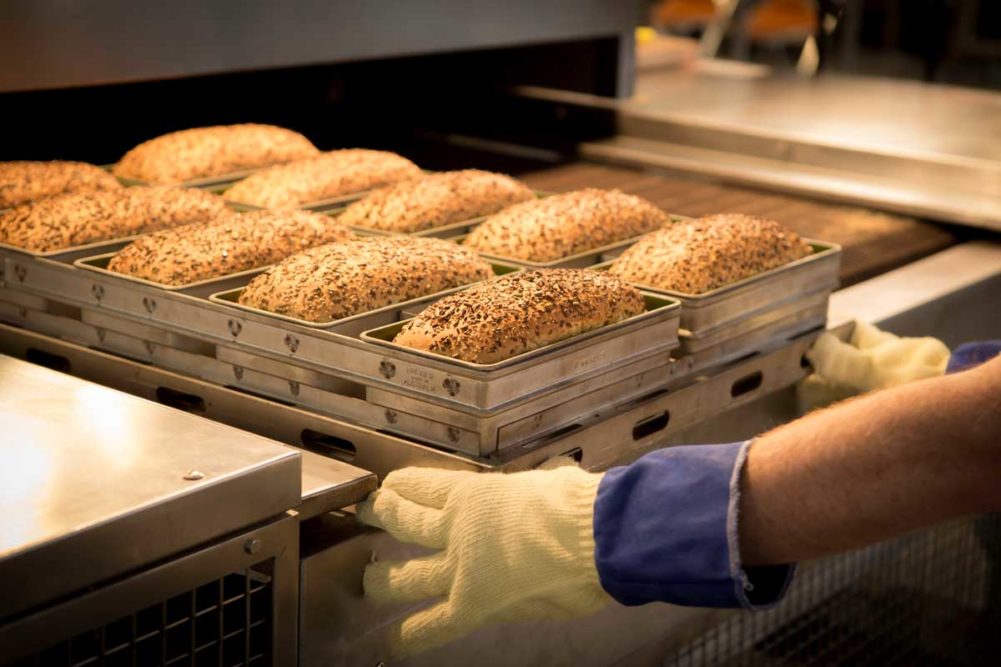Because of their delicate structure, crispy crusts and other iconic characteristics, many artisan breads aren’t often made in pans. However, that doesn’t mean it can’t be done, though some formula changes may be needed to produce hybrid versions on some high-volume lines.
“Making artisan bread means going back to basics, simple ingredients and handmade quality,” says John Giacoio, vice president of sales, Rheon USA. “Creating artisan pan bread means you need to gently handle the dough, so you don't damage its structure. You need to use a stress-free divider to maintain the quality of the dough.”
Hans Besems, executive product manager for AMF Tromp, an AMF Bakery Systems brand, noted that traditional artisanal breads are produced manually, rested and proofed at relatively low temperatures with no mechanical interference.
“However, to produce greater quantities of artisanal-style breads while reducing labor, we’ve developed automated solutions to achieve a similar taste and appearance,” he says. “It starts with using the right ingredients, no improvers, no enzymes and no other additives.”
François Retailleau, production lines product manager, Mecatherm, pointed out that resting and fermentation can take from 60 minutes to more than 12 hours for some artisan breads. To produce a higher capacity in less floor space, cold bulk fermentation allows bakers to develop fuller flavors.
He also suggested retarding, a different form of cold fermentation, for one hour or less at the end of the final proof. This simple step will provide more volume to the loaves as well as facilitate oven jump at the beginning of baking.
This article is an excerpt from the October 2020 issue of our sister publication Baking & Snack. To read the entire feature on specialty pan bread, click here.





